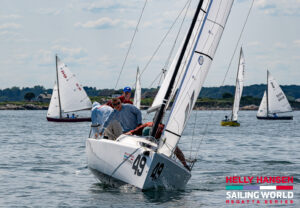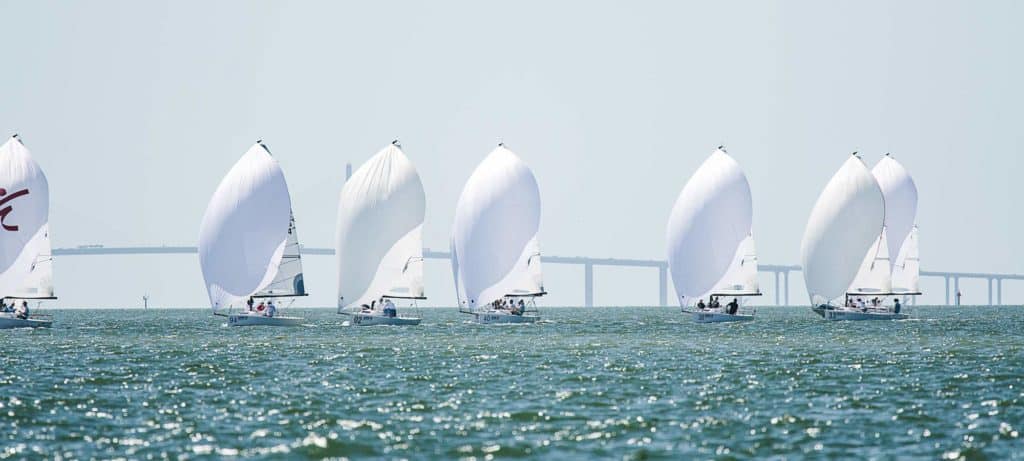
It was way back in 1998 when the NOOD Regatta first rolled into St. Petersburg, Florida, a time now so long ago that most of us can hardly remember what it was like. President Bill Clinton’s Monica Lewinsky scandal was just winding up, Dale Earnhardt was winning the Daytona 500 on his 20th attempt and one-design keelboat racing was on the up, with the emergent classes of the day being the Corel 45s and the Mumm 30s. Raceboats were loaded with sailors willing to hike their butts off all day in a simple open exchange for rum, beer, crew gear and maybe a red Mount Gay ball cap.
The NOOD Regatta scene was an eclectic mix of new and old one-designs when 149 boats assembled at St. Petersburg YC for that GMC Yukon/Sailing World NOOD Regatta. We’re talking Henderson 30s, J/22s, J/24s and J/29s, and the “level racing” classes. The mash-up of transient 20- to 30-footers transformed the marina across the street from the big yacht club into what could pass to an unsuspecting passerby as a nautical flea market, what with all the wet sailing gear hanging from lifelines and booms.
“This wasn’t your average club fleet,” is how the editors of this magazine described it. “More than 100 entries came from places like Michigan, Texas and New York.”
Trailering big keelboats to Florida for a midwinter regatta used to be a big deal. Nowadays, with sportboats practically living on their trailers year-round, and a slew of Southern regattas that connect Miami to parts north, keelboat portage is the norm. While the classes have changed — level is now PHRF, and the J/70s and Melges 24s have usurped the Sonars in St. Petersburg — the yacht club, with its busty figurehead and stately yardarm welcoming guests at the front door, hasn’t changed one iota. It’s been there long enough now to be considered an iconic architectural fixture of the St. Petersburg waterfront. It doesn’t have the same stature or history as the swanky Vinoy hotel a few blocks down the street, but there are decades of American sailing history right there behind its coral facade.
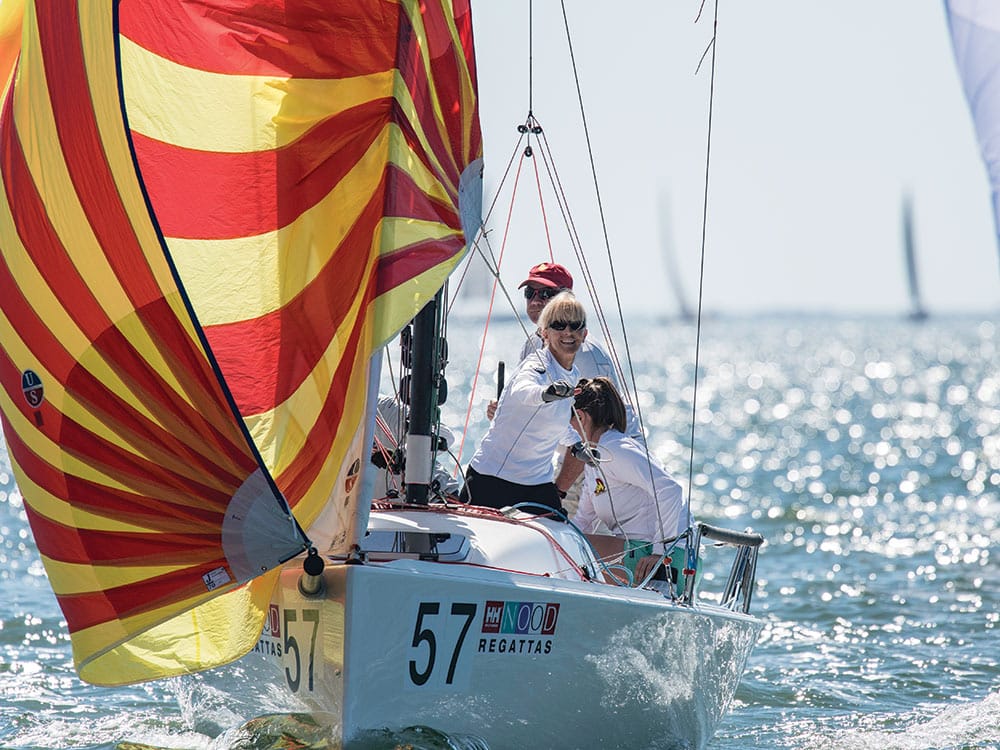
The yacht club today holds its own as an epicenter of sailboat racing on Tampa Bay and continues to breed world-class champions that follow in the footsteps of its more notable young stars of yesteryear, guys like Ed Baird and Mark Mendelblatt. It’s also upheld its reputation as a revolving door for one-design classes big and small that snowbird in Florida for midwinter championships: Lightnings, Snipes, Optimists, Thistles, to name a few.
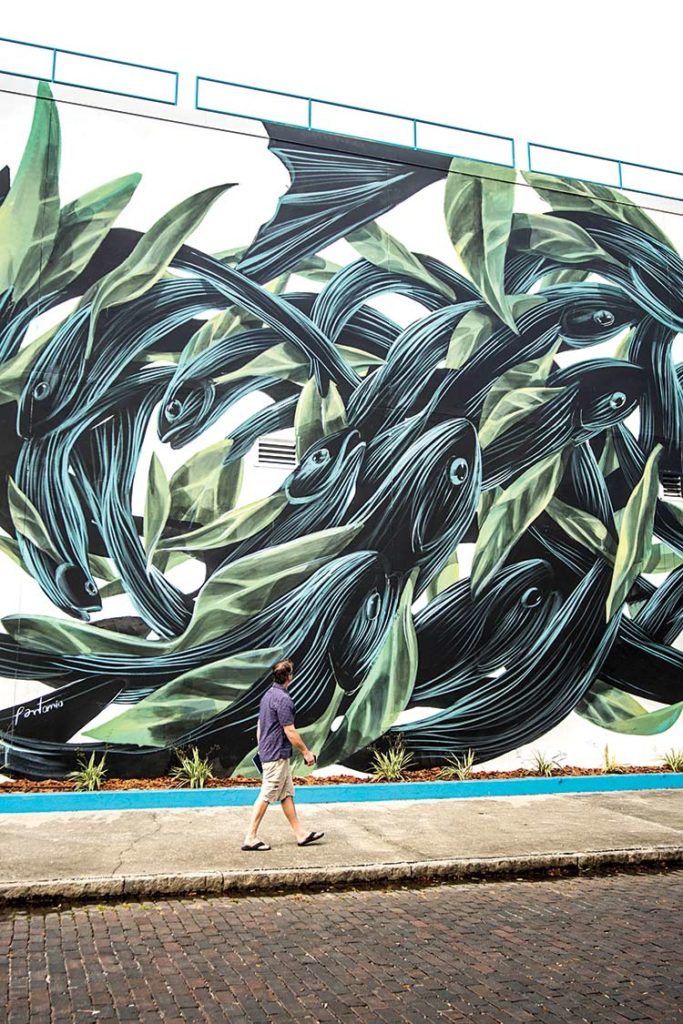
The big clubhouse, with its busy social calendar, caters to an affluent pool of members who have access to a top-shelf Sunday brunch, a circular sunken bar with crooning lounge singers on the weekends and an outdoor pool and tiki bar, as well as giant ballrooms for weddings and big regatta parties like the NOOD. All the essentials are there to satisfy the members’ annual dues. Plus, there’s a parking garage out back, as well as front-row seating for the annual IndyCar Firestone Grand Prix of St. Pete.
Across the street from the club, on Demens Landing, is where the magic happens though. The Sailing Center, a tall, white warehouse-looking structure on city property, is practically a year-round hive. The club’s lease with the city stipulates that the center provide inexpensive access to the water, which is darn near impossible to find in Florida these days.
On any given day, the center has a steady flow of member and nonmember kids in Optis, adults in club-owned J/70s, high schoolers in 420s and the city’s new millennial workforce dipping toes in one watersport or another. Its staff and waterfront team are young and much more in touch with the desires of competitors these days, and as racers themselves, they know how to run a top-notch regatta on and off the water.
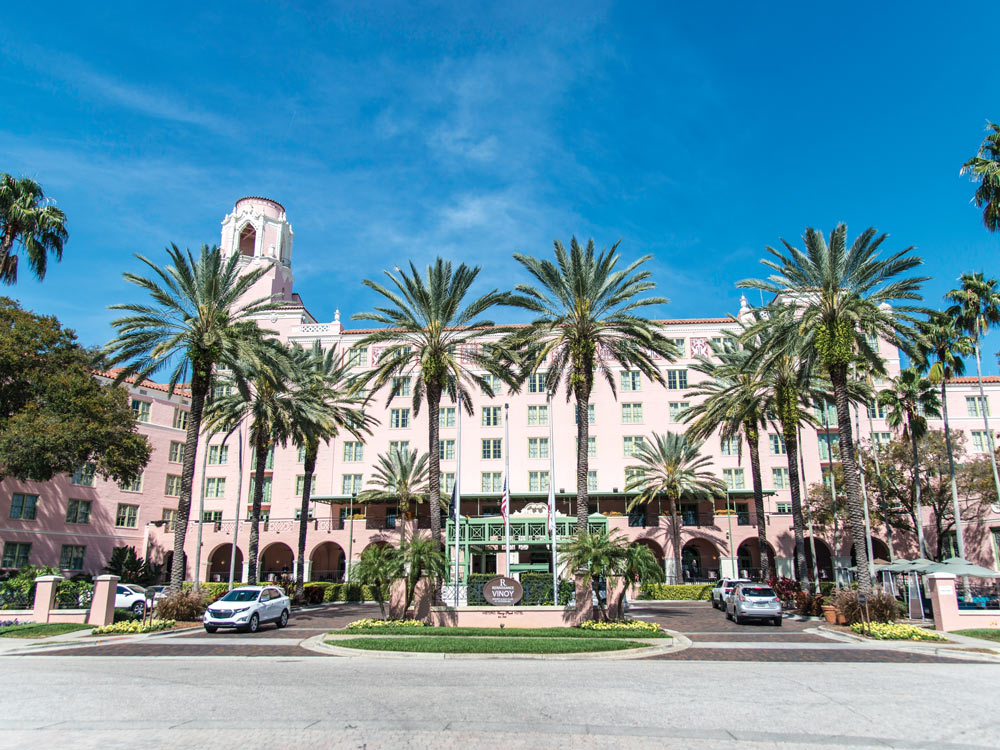
The scenery at the Sailing Center in February during the 2018 Helly Hansen NOOD Regatta isn’t much different than it was when NOOD Regatta organizers added the event to their series as its seventh and only midwinter stop. The trailers in the parking lot no longer have J/24s but J/70s, and the Lightnings have replaced quite a few of the Sonars.
Yet, while much of the club and its sailing center’s appearance remain unchanged, what has been dramatically transformed over the past 20 years is the city of St. Petersburg itself. The place is hopping, and anyone who hasn’t been to a NOOD Regatta in two decades should pay a visit. Be prepared to be blown away. St. Pete is enjoying an explosive growth spurt, and like a hormonal teenage boy, it’s only getting bigger, more mature and way more active after dark.
If it isn’t already, especially with Key West Race Week on permanent hiatus, St. Pete may just be the next great American regatta destination. Sure, Miami’s sailing conditions might be better, but it comes with a price. Plus, St. Petersburg is simply a friendlier place to play.
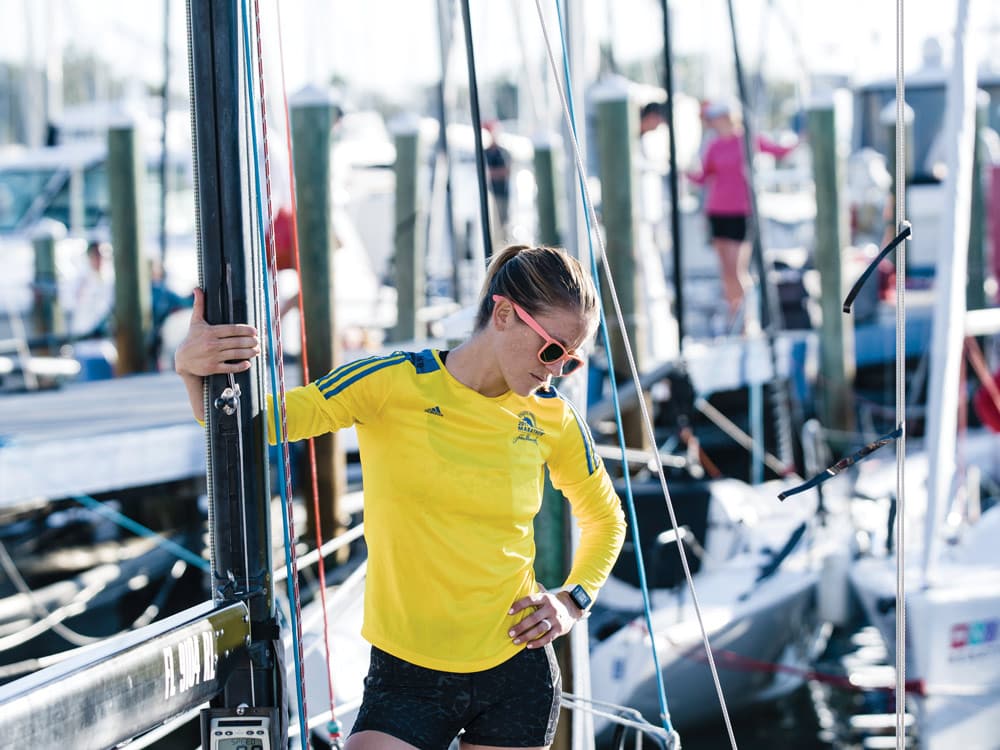
“St. Petersburg was, I’ll admit, a dead city,” says Mayor Rick Kriseman. “There used to be two jokes about us. The first was that you could shoot a cannon down Central Avenue and you wouldn’t hit anything or anyone, and the other was that the average age of our residents was ‘deceased.’”
The average age, he adds, is now 42.7, and it’s the No. 1 city in the state for millennials.
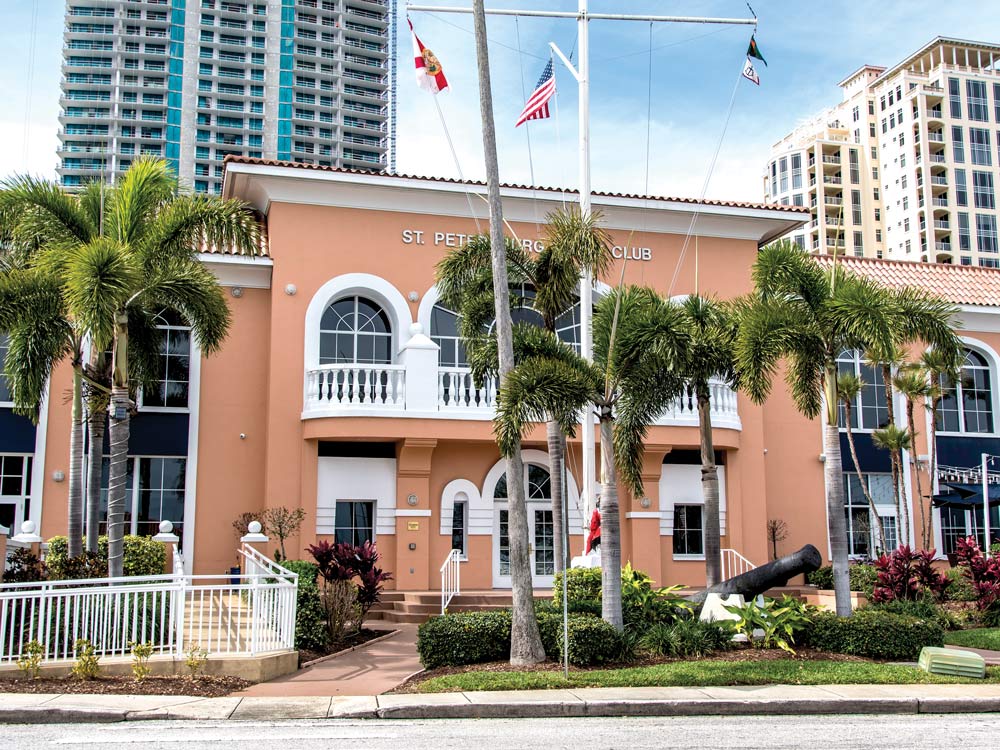
Kriseman is early into his second term when we meet, having recently eked out a “very expensive” election over his Republican rival. His re-election is a good thing for sailing, and for the club, because he’s keen to keep improving his city’s waterfront. Under Kriseman, the city has blossomed financially and physically, which one would think would bode well for an easy re-election, right? Not so, he says. “We had issues … with the sewers.”
When Hurricane Hermine dumped its load of tropical moisture on the region in August 2016, St. Petersburg’s antiquated sewage system purged more than a reported 230 million gallons back into waterways. The ensuing public outrage spurred Kriseman’s government into action. Millions of dollars in grants are now in play, and big infrastructure projects are underway. Tampa Bay’s water quality, and the preservation of St. Petersburg’s waterways in particular, says Kriseman, is a priority.
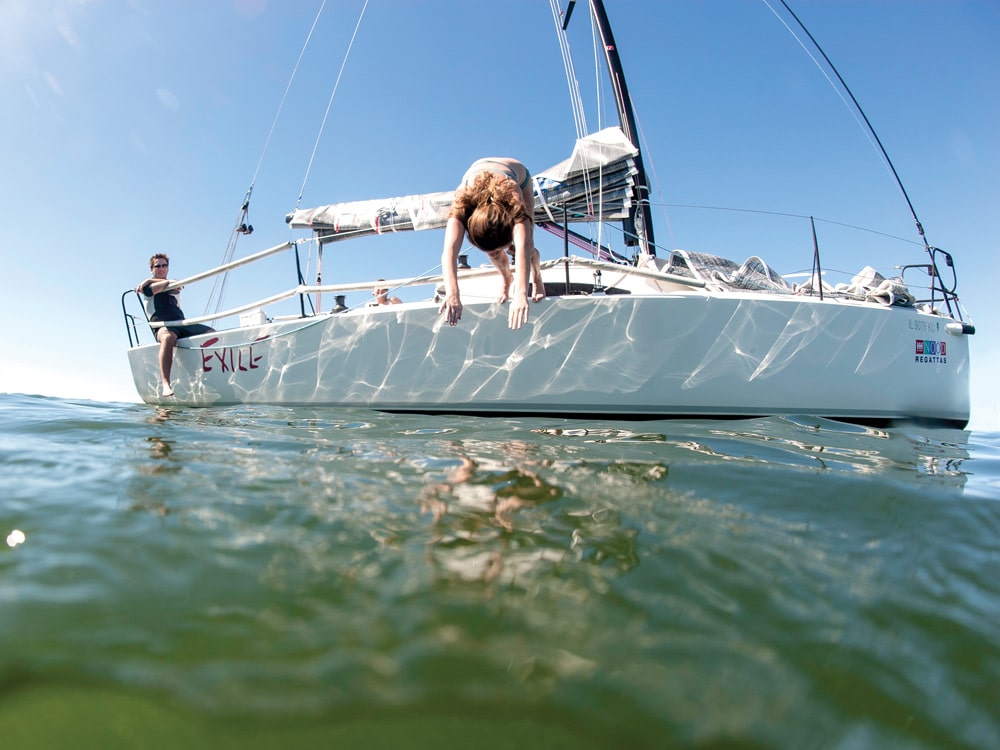
“It’s a unique time in the city right now,” he says. “And our waterfront is the key driver. The community is incredibly protective of the waterfront, and they don’t let anything go without paying careful attention to it.”
The city is surrounded by about 244 miles of shoreline, and the stretch of east-facing waterfront, which spans from the Coffee Pot at its northern end to Lassing Park in the south, is undergoing a considerable face-lift as part of a large-scale development plan. The vision is to make the city a destination approachable by water, rimmed by an interconnected park system with widespread public access and green transportation options, which Kriseman says bodes well for attracting and catering to future sailing events, such as the A Class Catamaran World Championships in 2020.
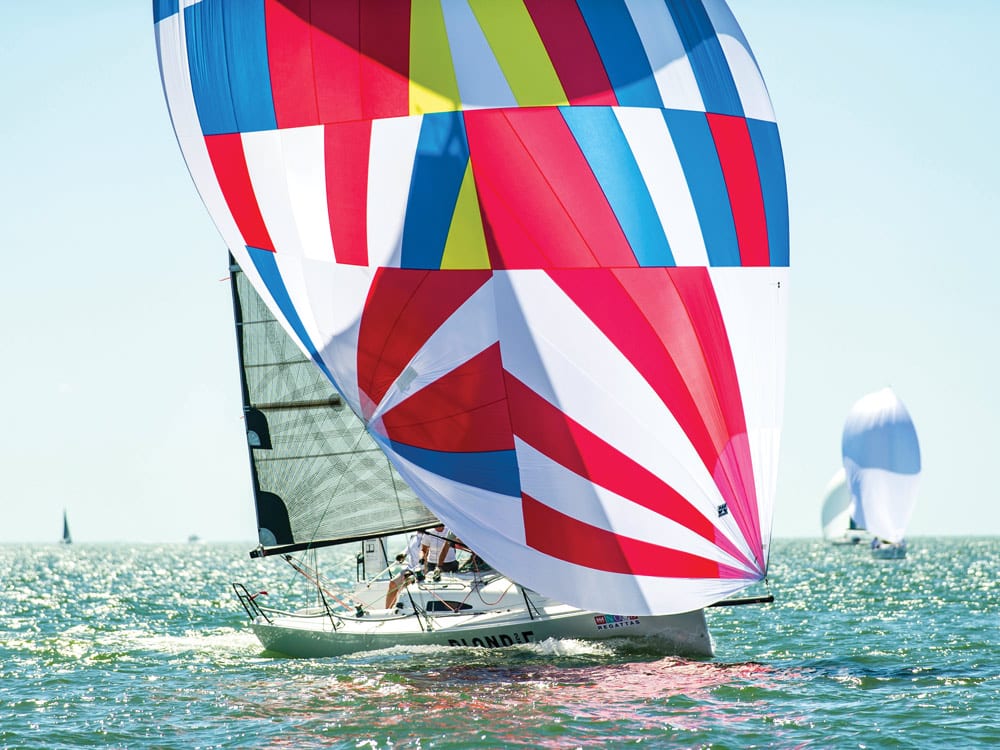
Anchoring the development is the completion of what is currently being called the New Pier. The gaudy, spaceship-looking structure that once jutted into the bay north of St. Petersburg YC was demolished years ago, to the locals’ delight. Its replacement is now full-pile-drive ahead, with a scheduled opening in 2020. Green space and observation decks running its length will make it a pleasant place for spectating sailboat races, and provide a new attraction for visiting families and friends of competitors out on the water.
“Part of the reason for our growth over the past few years is the quality of life,” says Kriseman. “It’s a downtown that’s walkable and bikeable, and being on the water is a huge draw. Even the mayor of Tampa says he wishes they’d protected their waterfront like we have ours.”
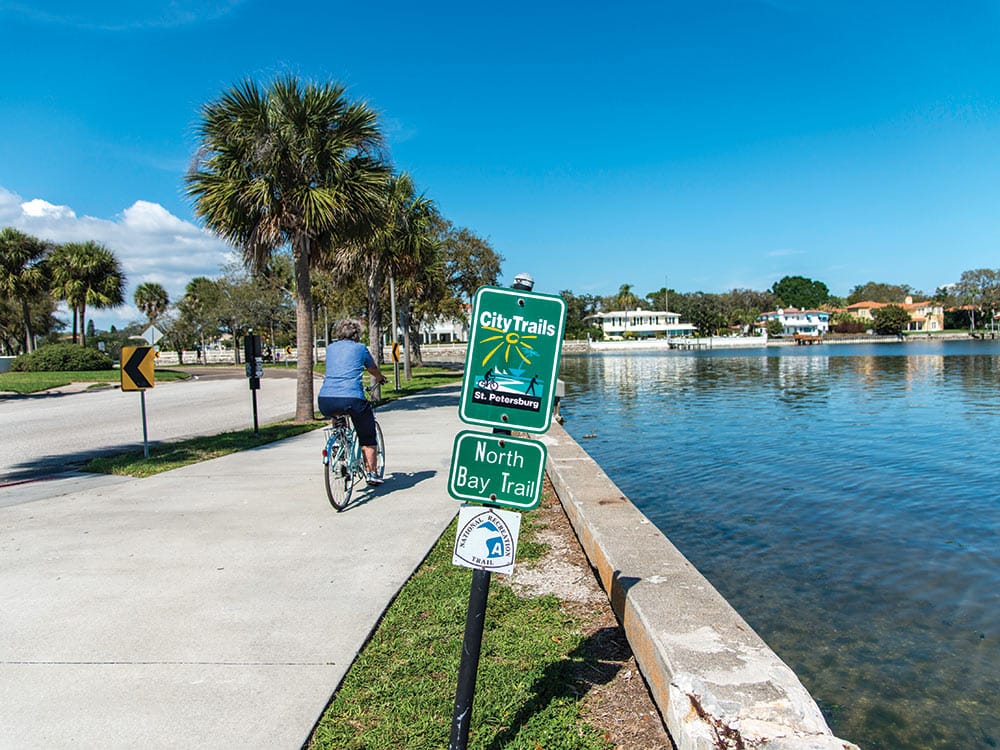
Only a few blocks west of the New Pier, in the heart of downtown, the silence of an early February morning is shattered at 7 a.m. with a cacophony of St. Pete’s growth spurt. Cranes and construction sites are omnipresent. There’s the new One St. Pete luxury condominium tower a block from the yacht club, said to be the largest in Pinellas County, at 41 floors and 450 feet tall, as well as two $85 million privately funded art museums nearing completion (one is the James Museum of Western and Wildlife Art, and the other is the Museum of the American Arts and Crafts Movement).
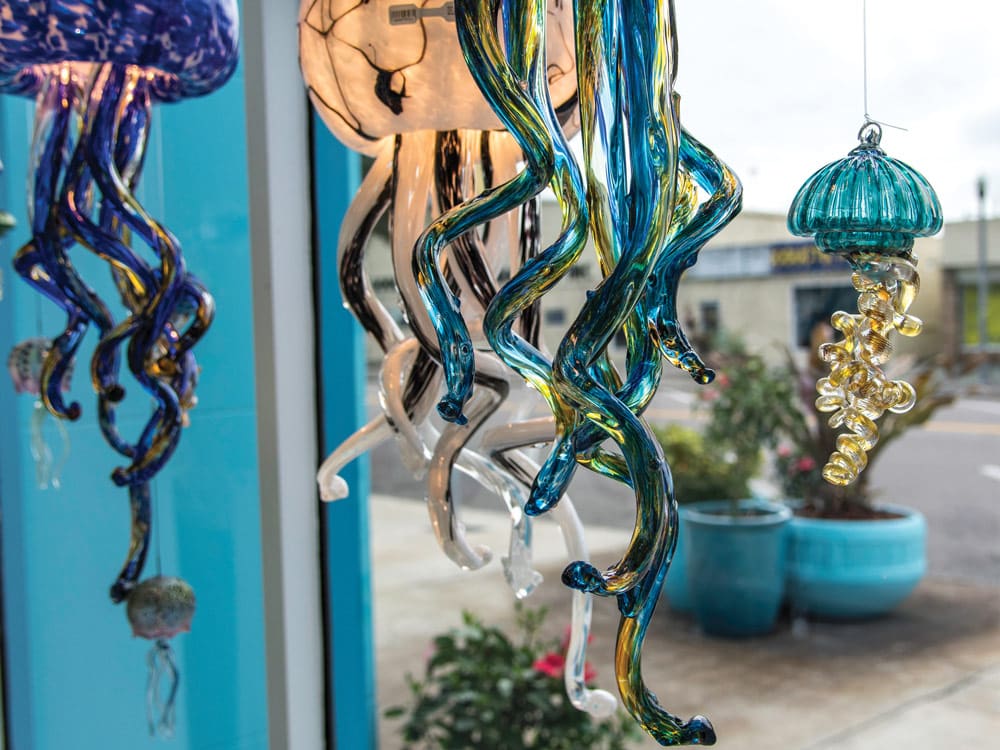
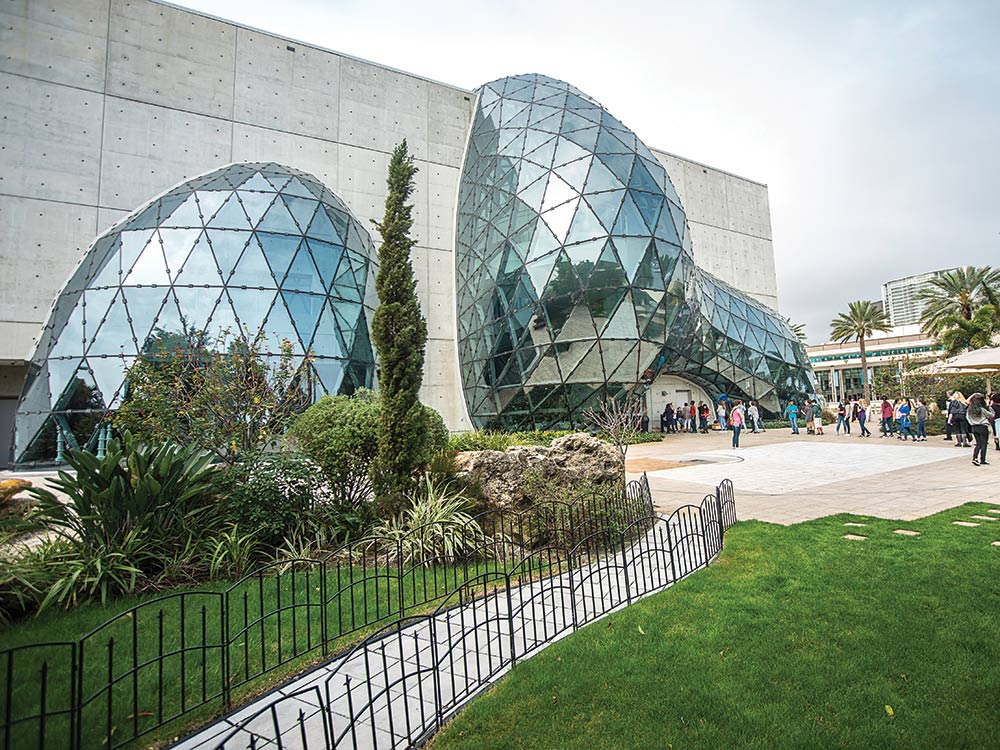
Nipping at the heels of all this new construction are restaurants, bars and dance clubs. Within walking distance of the club, regatta sailors can stumble upon live bands, salsa dancing, drag shows, roving bachelorette parties and open-air bars. The metamorphosis from a sleepy Wednesday night in the Burg to its Friday-night frenzy is fascinating.
Kriseman claims St. Pete is not just one of the fastest-growing cities in the Southeast, but it’s the arts and cultural capital of Florida as well, and that too extends to its gastro experience. “We also view our food and beer as an art,” he says, “as you can see by craft breweries all over the city.”
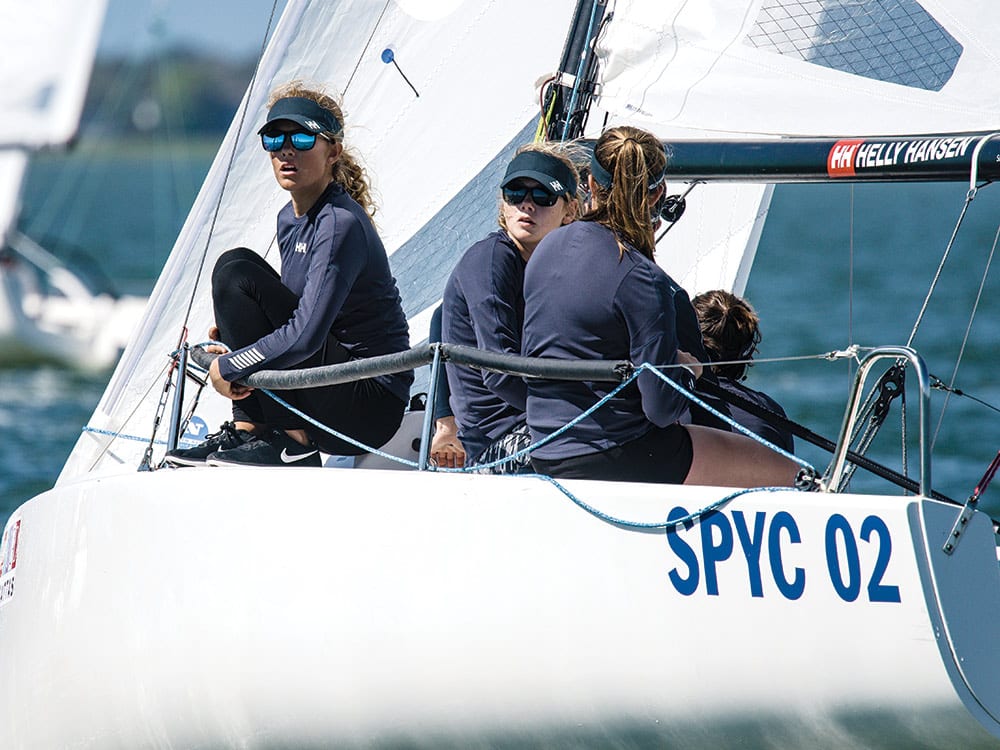
This state of affairs, of course, is in stark contrast to the NOOD of 1998. When the party ended at the club, one would wander a few blocks in search of after-hours entertainment, holding tight to one’s wallet and tripping over tumbleweeds. Not so these days. Blink on a Saturday night and you’re whisked away to a hip urban bar scene with shiny, happy people and more top-shelf restaurants than you could possibly indulge in over the course of a three-day regatta.
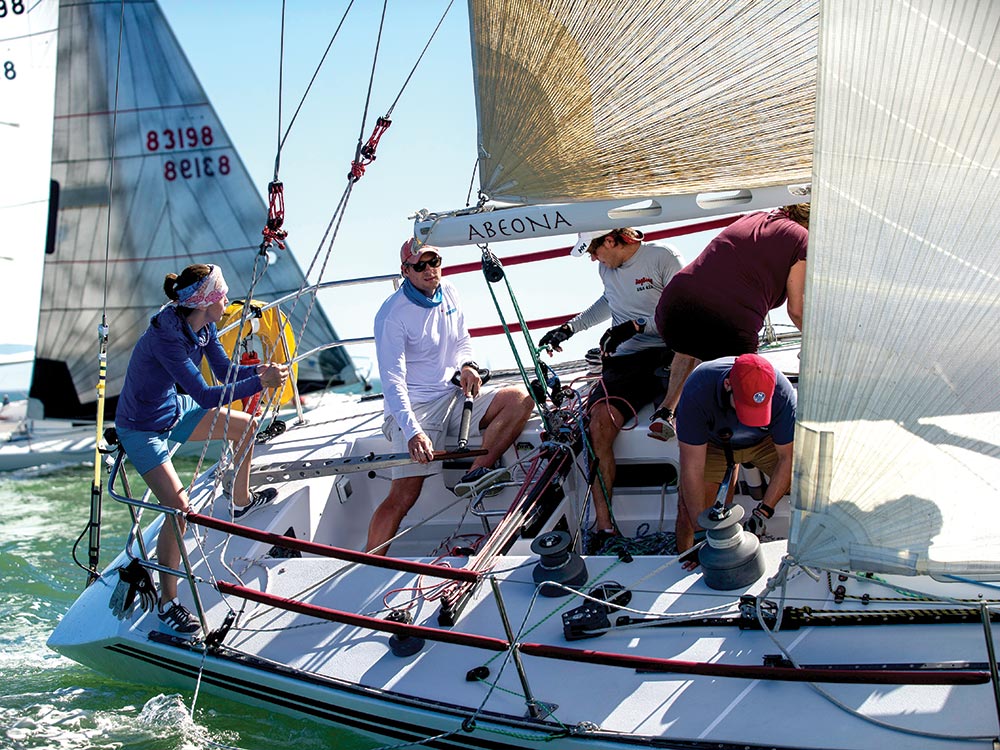
Granted, pounding drinks into the wee hours of the morning is not everyone’s version of a good time — racers do have to get up for boat call, after all. There are now many more attractions should Tampa Bay rear its uglier, glassier, windless side.
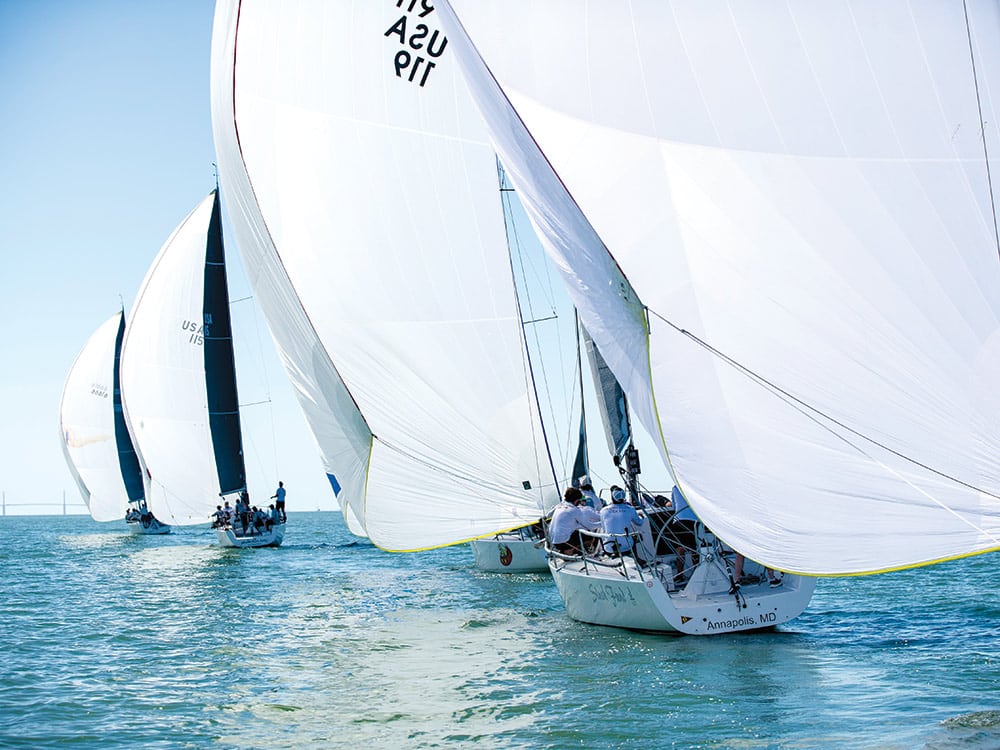
Yes, the venue can be notoriously light (the winter average is 8 knots), and as the downtown concrete jungle grows, so too may the impact on the sea breeze filling in from the ocean side of the peninsula or the northerlies that blow in the winter months. Should racers find themselves loitering near the yacht club’s figurehead under a limp AP flag, however, the St. Petersburg visitors guide has pages upon pages of daylight options to explore, starting with the Salvador Dalí Museum just down the road from the club. In the opposite direction is the Museum of Fine Arts. Impressionist painters not your thing? A few blocks west is the Morean Arts Center and the mind-blowing glasswork of Dale Chihuly.
If you’re not in the mood for art, stay outdoors and rent a cruiser from one of the many bike-share racks scattered about and wander into the gentrifying western neighborhoods with ever more bars and artist guilds, or head north on the coastal bike path to meander through manicured neighborhoods and parks. The point is, should races ever get postponed, or worse, canceled, there’s no excuse to be bored or loiter around the docks. Grab the crew, find a brew and get cultured.

